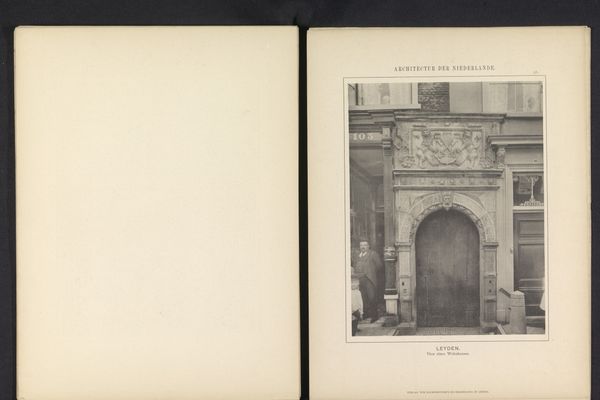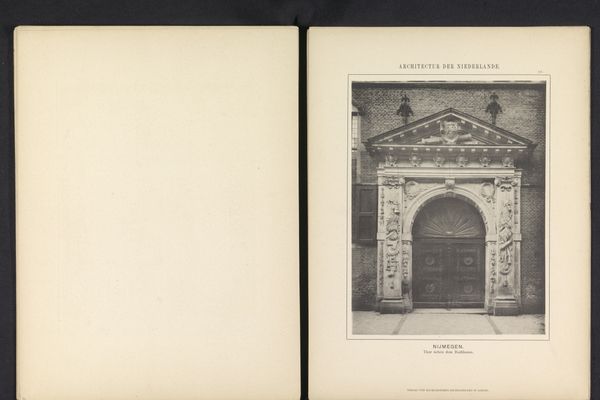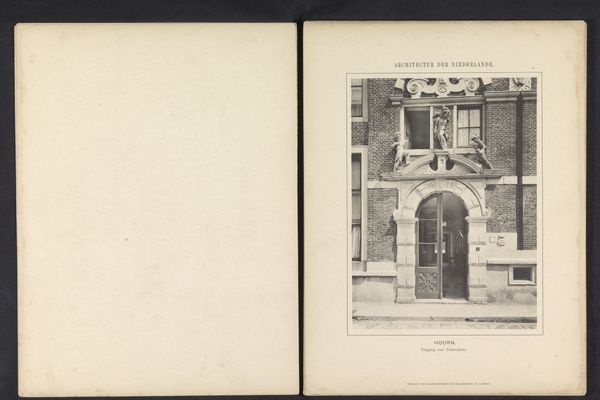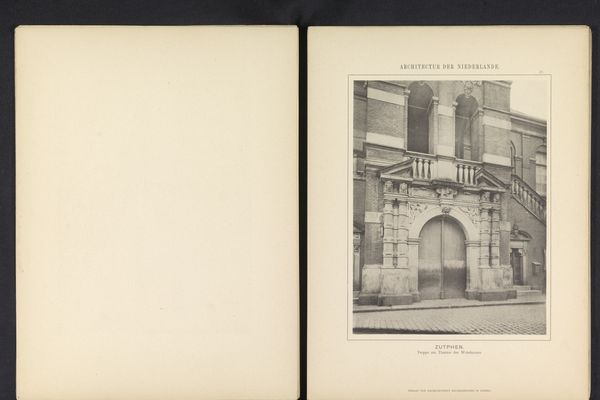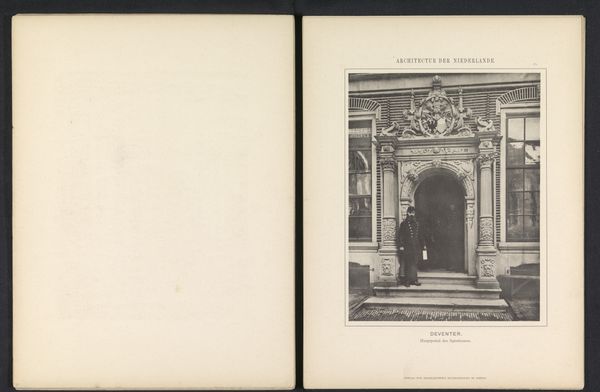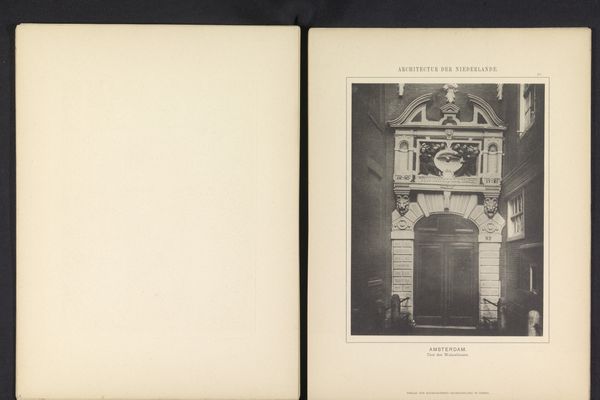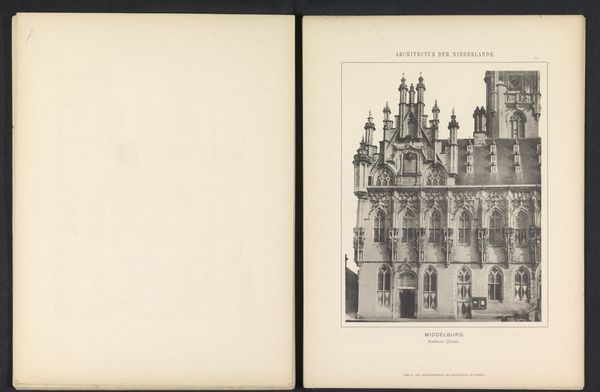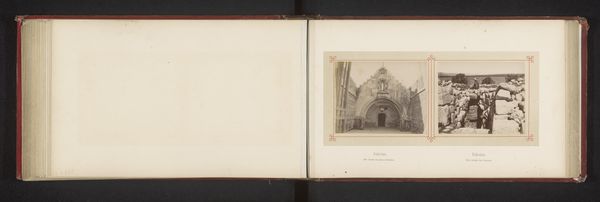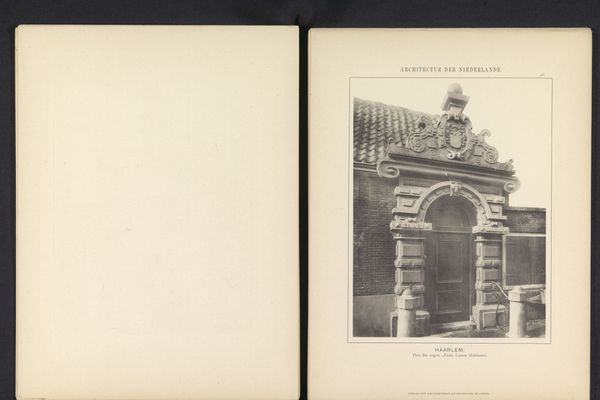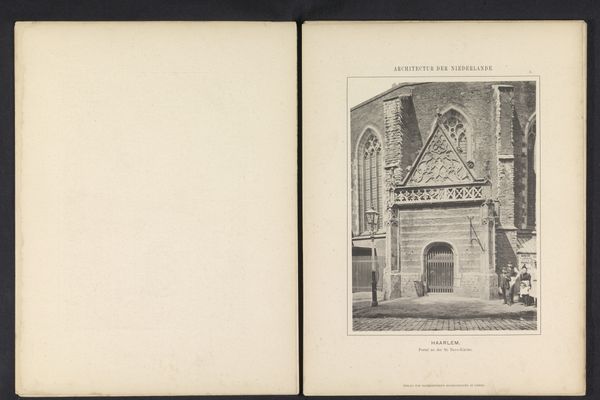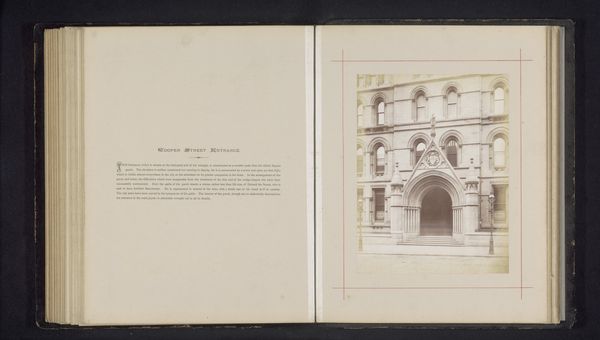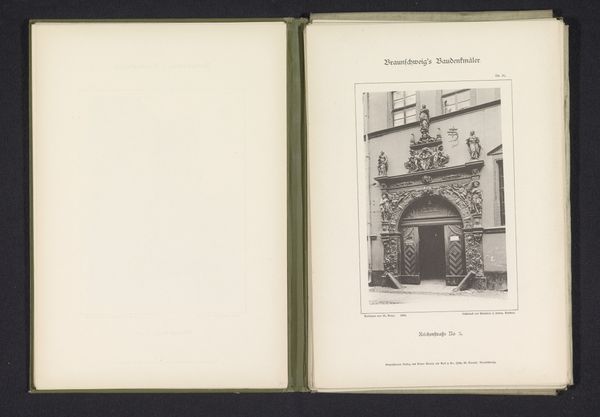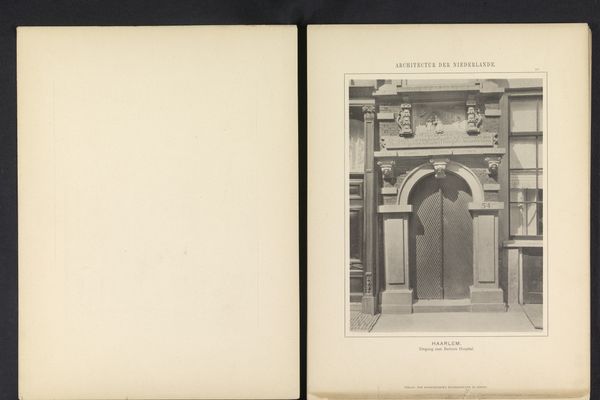
Gezicht op de poort van de Athenaeum Illustre in Amsterdam gevestigd in de Agnietenkapel before 1894
0:00
0:00
#
aged paper
#
light pencil work
#
sketch book
#
hand drawn type
#
personal sketchbook
#
hand-drawn typeface
#
pen-ink sketch
#
pen work
#
sketchbook drawing
#
sketchbook art
Dimensions: height 255 mm, width 196 mm
Copyright: Rijks Museum: Open Domain
Curator: Here we have an image entitled "Gezicht op de poort van de Athenaeum Illustre in Amsterdam gevestigd in de Agnietenkapel," dating from before 1894. It resides in the Rijksmuseum. What strikes you about it? Editor: My immediate impression is how solid the building feels, monumental even. But something about the figure leaning against the wall disrupts that sense of timelessness. He reminds me that this is a specific moment, not just an ideal. Curator: That's a sharp observation. Consider the portal. With its heraldic devices and layered ornamentation, portals can signify transitions between realms, acting as liminal spaces. The architecture is loaded with symbols intended to convey knowledge and authority. Editor: Absolutely. But who holds that authority, and what kind of knowledge is privileged here? I’m thinking about access. That carefully drawn figure looks very much like a gatekeeper or observer more than an invitee. There’s a tension there, right? This impressive entrance might only be open to some, not all. Curator: Interesting. Looking at the crest above the door, there are elements of classical heraldry combined with what look like Masonic symbols, a hybrid language intended to resonate with specific initiates. I wonder about the Athenaeum Illustre as a bastion of enlightened thought during a time of social change in Amsterdam. Editor: Exactly. The architecture, so rooted in tradition, speaks to the values this institution was meant to uphold. The figure adds an extra layer, he highlights both inclusion and exclusion, consciously or not. What stories of class or cultural hierarchy might be hiding in plain sight? It makes one wonder if the gate is truly one to freedom and progress, or rather if it serves as a means for the privileged to self-segregate from others. Curator: These details, indeed, prompt deeper thoughts. Art serves both as a reflector and interpreter of human history. Thanks for guiding me to those thoughts! Editor: Glad to be part of the tour; thinking through art is such a social act of co-creation of ideas and critical reflection on them!
Comments
No comments
Be the first to comment and join the conversation on the ultimate creative platform.
